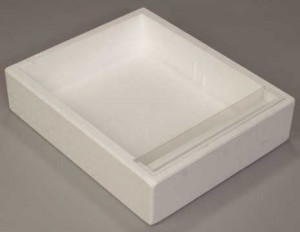I just read an e-zine from Brushy Mountain that encourages everyone to be feeding their bees right now, thanks to the lack of rain and dearth of nectar. If you’re in an area of the country that is experiencing a multi-year, devastating drought (mostly the corn belt, like Iowa), this may be necessary (I have no experience with this kind of scenario in my beekeeping travails), but I do not believe it is necessary in our area (which may experience a month or two of drought in a given Summer.)
Bees are biological organisms, just like deer, birds and other insects. You don’t have to feed those organisms in our droughts and you shouldn’t have to feed your bees, unless you somehow have a genetic derelict in your apiaries. If you do have such a bee, one that cannot survive in our environment without external, man-driven measures, I would argue that you SHOULD let them perish. We do not need that kind of genetics in our area.
This discussion is particularly relevant today, based on the large number of queries that I have received about ‘should I be feeding my bees’ from local beekeepers. Based on my comments above, you might conclude that I never feed my bees. In fact, I do feed some of my bees, but very rarely in August (or July). I am a firm believer in feeding any new colony (caught by a swarm or purchased) until it has drawn out (drawn out refers to the frames of foundation and drawing each out with wax) whatever you consider to be the hive bodies. Drawing out wax takes a tremendous amount of resources and you sometimes get a new hive so late in the nectar flow that they have little chance of drawing out their living quarters before the flow is over (usually in June). To help them over this obstacle, feeding is a good thing. Once they have drawn out their living quarters, there is no natural reason to feed them again (but, I might change my tune if I ever experience a multi-year drought…)

But, do I feed my young hives in July and August? Unfortunately, there is no black-and-white answer to this. In my experience, if I have a young hive that has drawn out the lower hive body (for me, this is usually a Deep super), I will continue to feed in July/August as they finish drawing out the upper hive body (for me, this is typically a Medium super.) As long as I feed late in the day (when most troublesome foragers from other hives are already back home for the day and less likely to smell this new treat as I pour it into the hive), hives of this size have no problems keeping out potential robbers and benefit well from the feed. But, I also have brand new, queenless Nuc’s in my home yard at this time of year. These Nuc’s (for Overwintering) are not expected to fill out a full hive body. Instead, they only need to fill out 10 frames (5 in the lower Nuc and 5 in the upper Nuc.) In addition, in July and August, many of these Nuc’s experience a queenless period as they raise their new queens. I never feed a brand new Nuc that is queenless in July or August. Absolutely never. It seems to me that queenless nuc’s are at the greatest risk of being robbed out during this time of year. In fact, any Nuc has a high chance of being robbed out this time of year, but queenless Nuc’s seem to really be at risk. My goal with these hives is to get a laying queen before I feed and I try to hold off feeding until late August at the earliest.
Finally, I suppose it is possible that you could take too much honey from your hives during the honey harvest and then have to feed to make up for that mistake. I have never done this, so cannot really comment on it. In truth, I checked 3 outyards today and have lots of extra honey, including 1 fully drawn and capped Medium honey super (many of my spare supers are partially drawn and filled, but not capped.) As stated many times before, I definitely believe that you will end up with stronger bees if they are eating nectar-based honey over the Winter, as opposed to syrup-based. It may be the reason why I simply do not have Winter losses.
It should also be noted that:
1. I only use top feeders (see insert) for my full hives. In my opinion, this is the best kind of feeder for a full hive. So, when I am feeding my younger hives in July/August, it is with this kind of feeder. I would never use a boardman-style (or other external) feeder. Having feed hanging off the side of a hive is a big advertisement to other bees in the area.
2. I pretty much feed the same mixture all year. For me, it is basically 10 lbs of sugar mixed with 2 gallons of water. If you go by a ‘pint is a pound the world around’, this comes out to something like a 1.6 parts water to 1 part sugar.
